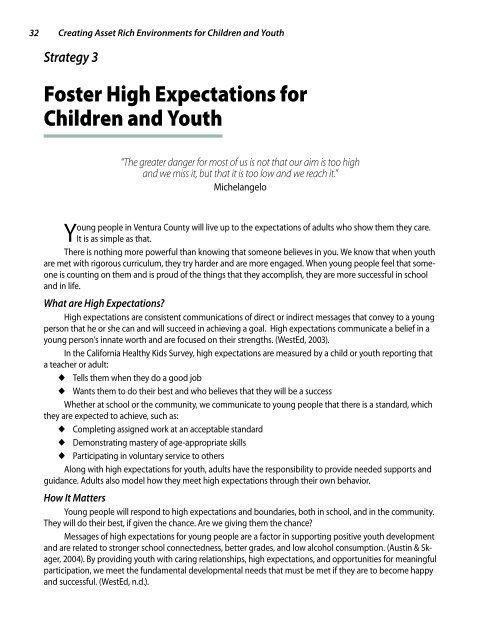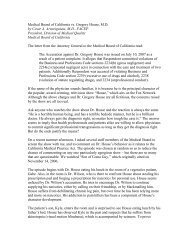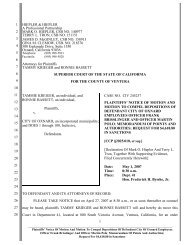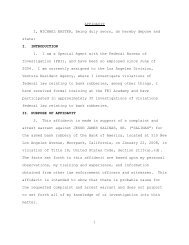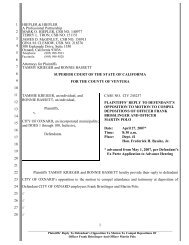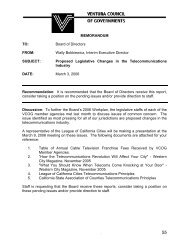for Children and Youth - Ventura County Star
for Children and Youth - Ventura County Star
for Children and Youth - Ventura County Star
Create successful ePaper yourself
Turn your PDF publications into a flip-book with our unique Google optimized e-Paper software.
32 Creating Asset Rich Environments <strong>for</strong> <strong>Children</strong> <strong>and</strong> <strong>Youth</strong><br />
Strategy 3<br />
Foster High Expectations <strong>for</strong><br />
<strong>Children</strong> <strong>and</strong> <strong>Youth</strong><br />
“The greater danger <strong>for</strong> most of us is not that our aim is too high<br />
<strong>and</strong> we miss it, but that it is too low <strong>and</strong> we reach it.”<br />
Michelangelo<br />
Young people in <strong>Ventura</strong> <strong>County</strong> will live up to the expectations of adults who show them they care.<br />
It is as simple as that.<br />
There is nothing more powerful than knowing that someone believes in you. We know that when youth<br />
are met with rigorous curriculum, they try harder <strong>and</strong> are more engaged. When young people feel that someone<br />
is counting on them <strong>and</strong> is proud of the things that they accomplish, they are more successful in school<br />
<strong>and</strong> in life.<br />
What are High Expectations?<br />
High expectations are consistent communications of direct or indirect messages that convey to a young<br />
person that he or she can <strong>and</strong> will succeed in achieving a goal. High expectations communicate a belief in a<br />
young person’s innate worth <strong>and</strong> are focused on their strengths. (WestEd, 2003).<br />
In the Cali<strong>for</strong>nia Healthy Kids Survey, high expectations are measured by a child or youth reporting that<br />
a teacher or adult:<br />
◆◆ Tells them when they do a good job<br />
◆◆ Wants them to do their best <strong>and</strong> who believes that they will be a success<br />
Whether at school or the community, we communicate to young people that there is a st<strong>and</strong>ard, which<br />
they are expected to achieve, such as:<br />
◆◆ Completing assigned work at an acceptable st<strong>and</strong>ard<br />
◆◆ Demonstrating mastery of age-appropriate skills<br />
◆◆ Participating in voluntary service to others<br />
Along with high expectations <strong>for</strong> youth, adults have the responsibility to provide needed supports <strong>and</strong><br />
guidance. Adults also model how they meet high expectations through their own behavior.<br />
How It Matters<br />
Young people will respond to high expectations <strong>and</strong> boundaries, both in school, <strong>and</strong> in the community.<br />
They will do their best, if given the chance. Are we giving them the chance?<br />
Messages of high expectations <strong>for</strong> young people are a factor in supporting positive youth development<br />
<strong>and</strong> are related to stronger school connectedness, better grades, <strong>and</strong> low alcohol consumption. (Austin & Skager,<br />
2004). By providing youth with caring relationships, high expectations, <strong>and</strong> opportunities <strong>for</strong> meaningful<br />
participation, we meet the fundamental developmental needs that must be met if they are to become happy<br />
<strong>and</strong> successful. (WestEd, n.d.).


